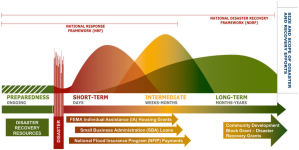MGen (Ret'd) Seymour, B.F. (2023), former DCO, CJOC, argues that the CAF is only one part of the country's emergency management system, where provinces hold primary jurisdiction over their respective areas. His key argument is that the success of Op LENTUS obscures available local capabilities and hides underfunded gaps. I agree with the position of the CAF charging costs back to the province
As discussed earlier, the Humanitarian Workforce (HWF) program (Public Safety Canada, 2023) has stable funding for three years (Apr 2023-Mar 2026), for the four major participating NGOs—Canadian Red Cross (CRC), St. John Ambulance (SJA), Salvation Army (SA) and Ground Search and Rescue (GSAR)—to encourage their volunteers to take on a more significant role disaster preparedness and response roles (Public Service Canada, 2023). The HWF program intends to reduce the reliance on the CAF for routine recovery activities. The HWF program draws on examples from other international models, such as Germany's Technical Relief (THW) program (Wilson, 2023). There will be growing pains as the HWF program develops, so I have focused my thesis on the challenges of attracting and retaining the required volunteers for a successful HWF program.
References:
Public Safety Canada. (2023, July 11).
Government of Canada continues to build disaster response capacity to large-scale disasters. [News release]. Government of Canada.
Government of Canada continues to build disaster response capacity to large-scale disasters - Canada.ca
Seymour, B.F. (2023). The Canadian Armed Forces in Canada’s domestic emergency management systems: Masking gaps in civil society.
On Track, 31, 12-29. Canadian Defence Academy Institute.
https://cdainstitute.ca/wp-content/uploads/2023/11/Ontrack-vol-31-november-2023.pdf
Wilson, A. (2023, November 9).
Rising domestic operational deployments and challenges for the Canadian Armed Forces. Standing Committee on National Defence.
Evidence - NDDN (44-1) - No. 81 - House of Commons of Canada








